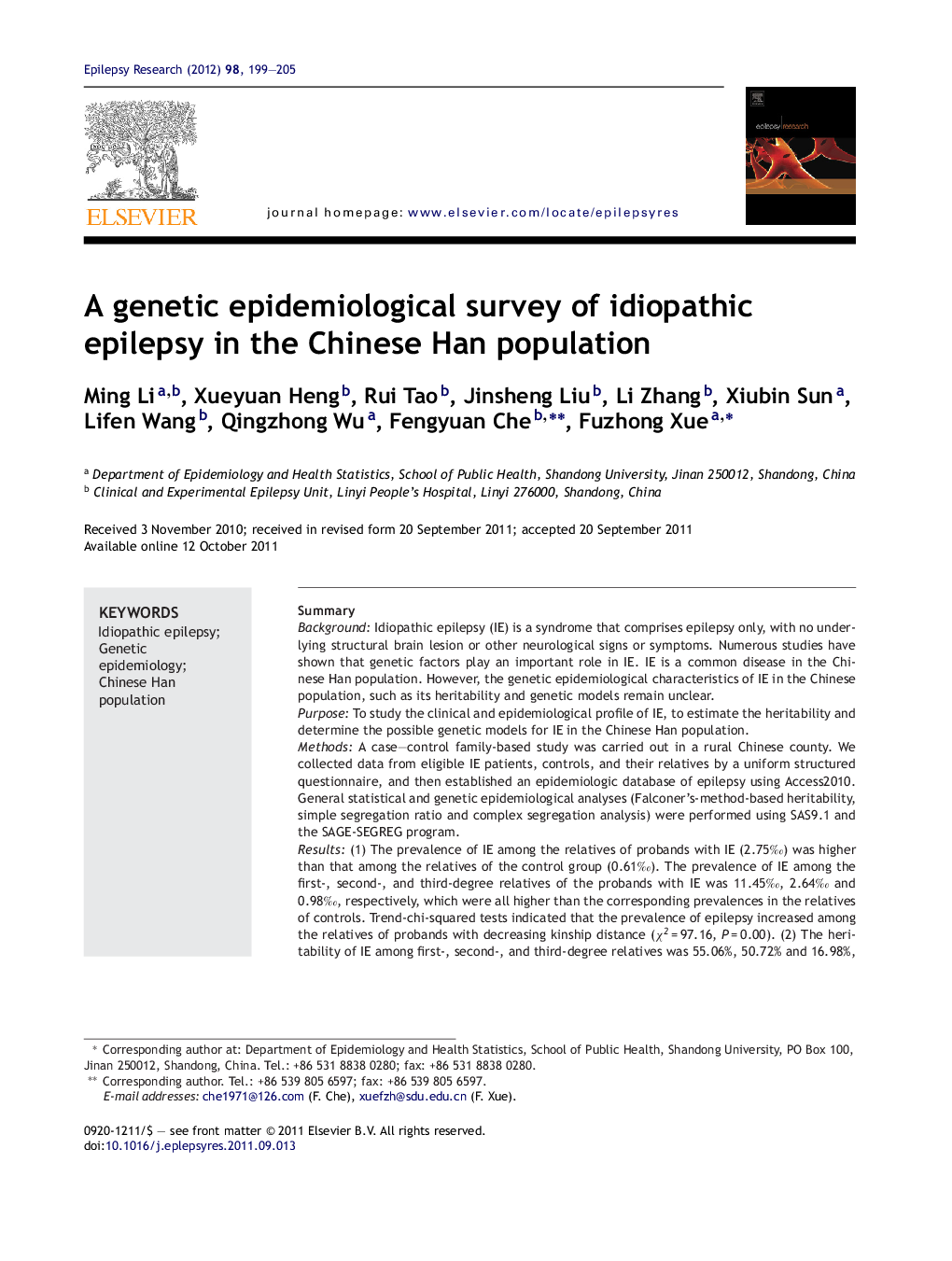| Article ID | Journal | Published Year | Pages | File Type |
|---|---|---|---|---|
| 6016101 | Epilepsy Research | 2012 | 7 Pages |
SummaryBackgroundIdiopathic epilepsy (IE) is a syndrome that comprises epilepsy only, with no underlying structural brain lesion or other neurological signs or symptoms. Numerous studies have shown that genetic factors play an important role in IE. IE is a common disease in the Chinese Han population. However, the genetic epidemiological characteristics of IE in the Chinese population, such as its heritability and genetic models remain unclear.PurposeTo study the clinical and epidemiological profile of IE, to estimate the heritability and determine the possible genetic models for IE in the Chinese Han population.MethodsA case-control family-based study was carried out in a rural Chinese county. We collected data from eligible IE patients, controls, and their relatives by a uniform structured questionnaire, and then established an epidemiologic database of epilepsy using Access2010. General statistical and genetic epidemiological analyses (Falconer's-method-based heritability, simple segregation ratio and complex segregation analysis) were performed using SAS9.1 and the SAGE-SEGREG program.Results(1) The prevalence of IE among the relatives of probands with IE (2.75â°) was higher than that among the relatives of the control group (0.61â°). The prevalence of IE among the first-, second-, and third-degree relatives of the probands with IE was 11.45â°, 2.64â° and 0.98â°, respectively, which were all higher than the corresponding prevalences in the relatives of controls. Trend-chi-squared tests indicated that the prevalence of epilepsy increased among the relatives of probands with decreasing kinship distance (Ï2Â =Â 97.16, PÂ =Â 0.00). (2) The heritability of IE among first-, second-, and third-degree relatives was 55.06%, 50.72% and 16.98%, respectively. The weighted mean heritability was 46.07%. (3) The simple segregation ratio of IE was 0.03, significantly lower than the Mendelian recessive segregation ratio of 0.25. Complex segregation analysis showed that the population we studied accepted a Mendelian genetic model (dominant, recessive, additive, and a major gene model) and excluded the general model, non-transmitted model, and environment-only model. A Mendelian additive inheritance model was ultimately the best-fit because it had the lowest Akaike Information Criteria score.ConclusionIn the Chinese Han population, IE follows a pattern of polygenic Mendelian additive inheritance rather than single-gene inheritance. Nearly half of the total variance can be explained by genetic factors.
